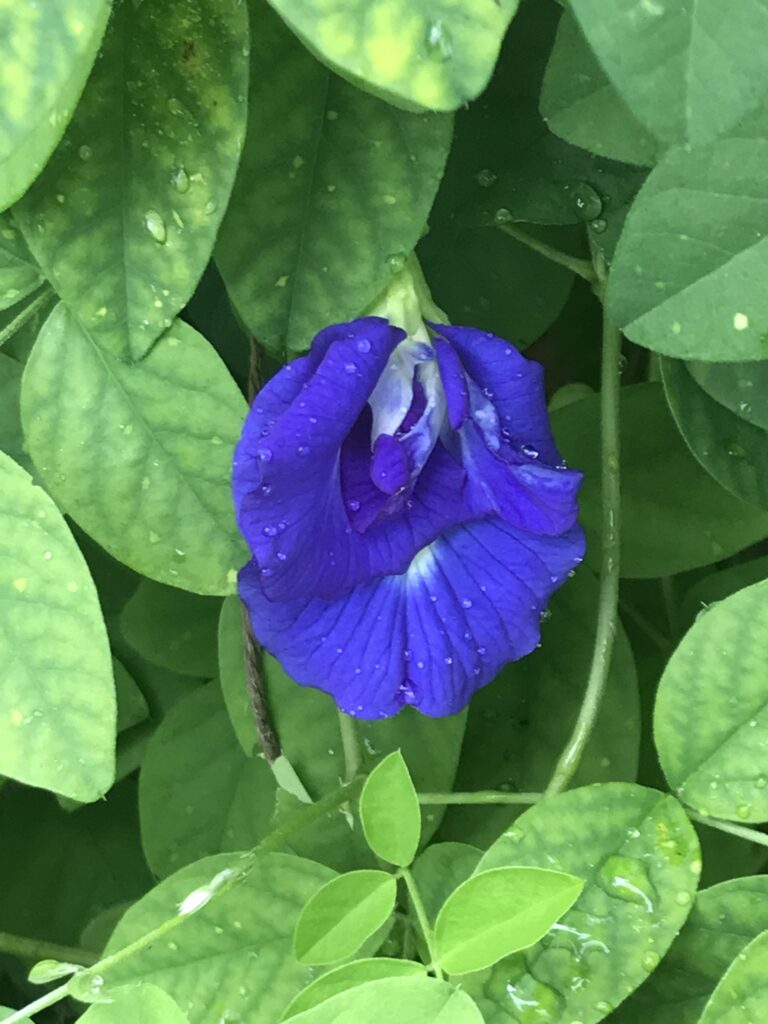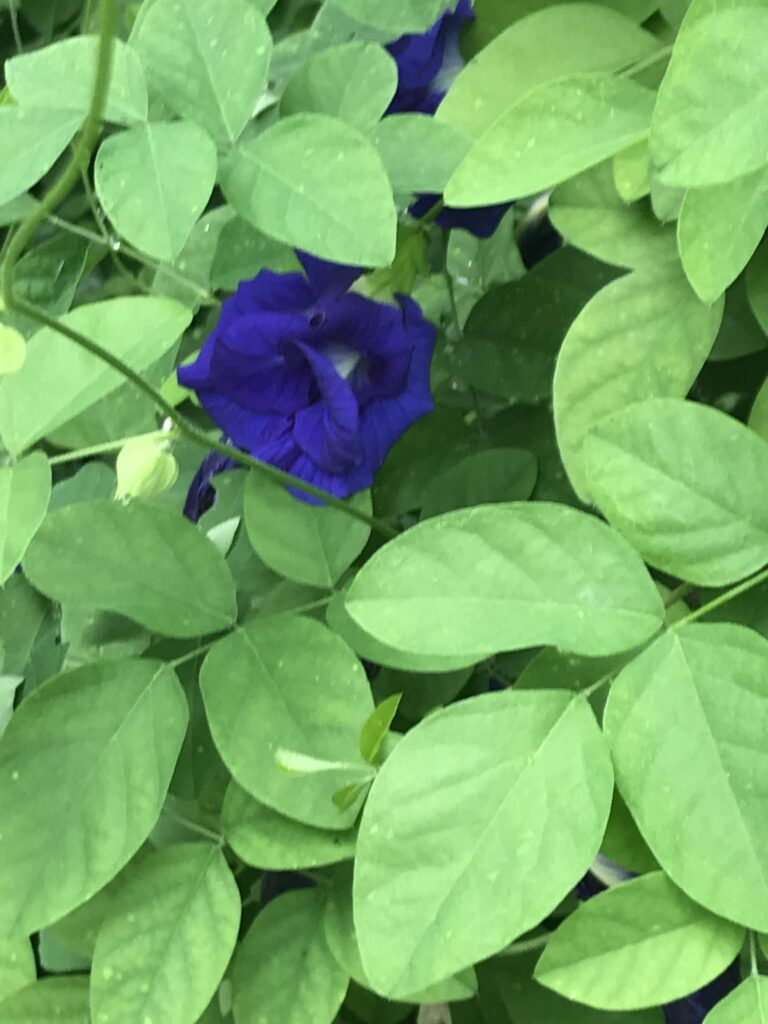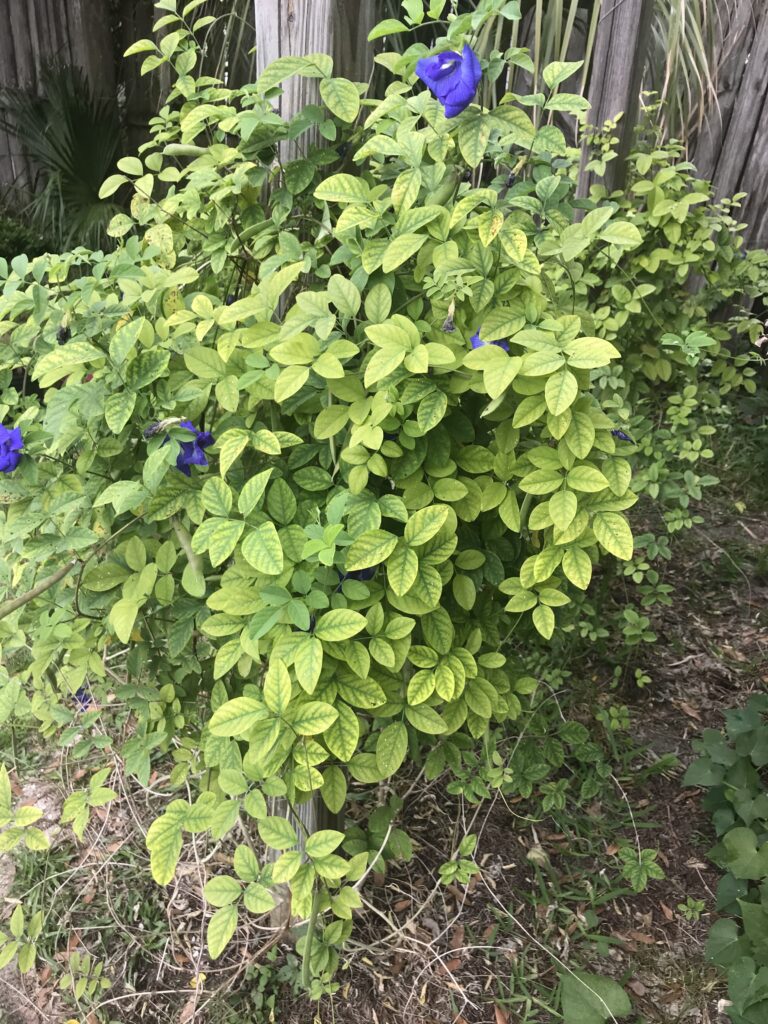
Blue butterfly pea vine, Asian pigeon wings
Blue butterfly pea vine, or Clitoria ternatea, is a tender perennial flowering vine native to Southeast Asia, but can also be found growing in tropical and subtropical climes in Australia, Africa, and the Americas.
Blue Butterfly Pea Vine Benefits
- Ornamental legume that grows quickly in the garden
- Nitrogen-fixing vining plant with bright blue flowers
- Excellent high-protein fodder for livestock and wildlife
- Flowers produce a safe, vivid blue coloring for food and drink as well as textiles
- Medicinal qualities include nootropic, anti-diabetic, anti-oxidant, and anti-stress effects
- Extract of leaves work as a safe, pollinator friendly pesticide for gardeners and farmers

Blue Butterfly Pea Vine Description
While most consider it an ornamental plant, Blue Butterfly Pea Vine also has culinary and medicinal uses. In Southeast Asia, it is used as a food coloring and is particularly well-loved as a cold or hot tea when combined with lemongrass. The tea is a beautiful vivid blue color but turns purple when lemon juice is added. Medicinally, it is said to aid memory and alleviate depression.
As well as making a wonderful natural dye for textiles, it is also currently used in Australia as a bee-friendly crop pesticide that breaks down harmlessly in the environment.
Clitoria ternatea is a legume, which means its leaves also make a nutritious fodder for animals and works as a nitrogen fixer in the garden or landscape.

Tips for Germination
Blue butterfly pea may have a reputation for poor germination rates, but studies have shown that it germinates best in moist soil at higher temperatures. Unusually, mature seeds offer a higher germination rate than fresh seeds
To improve germination, use seeds stored at least six (6) months. Nick the seed lightly and soak overnight in tepid or warm water. Plant seeds 1 – 1.5 inches deep and keep soil moist. Blue butterfly germinates best with temperatures are 80F, so a heating mat may be required in cooler climates.

Buy Blue Butterfly Pea Vine Here
| Species Name: | Clitoria ternatea |
| Common name(s): | butterfly pea, bluebell vine, Darwin pea, Asian pigeonwings, blue pea, cordofan pea |
| Defining Characteristics: | The flower of this plant resembles a woman's genitals, or a butterfly. Deep blue petals with rich white centers open to display a smaller set of petals that sit pertly at the top of the blossom. These are vining plants. |
| Temperature requirement: | 66-82 F (Can handle lows in the high 50s for a short time, and higher highs with enough humidity) |
| Watering frequency: | Indoors water when top 2 inches of soil is dry. Outdoors, water regularly during the first growing season and hot/dry weather, this plant can be drought tolerant. |
| Lighting: | Full sunlight (6-8 hours a day) |
| Soil type: | Rich, well draining, sandy soil (should contain compost/organic matter) with a pH of 6.6-7.5 |
| Growth rate: | Seed Germination: 15-20 days Mature pods: 110-150 days Ground cover: 30-40 days |
| Height: | 9 feet 8 inches (outdoors) |
| Origin: | Possibly Latin America, or Asia - naturalized through much of Africa, Australia, and Asia |
| Regional locality: | Unknown |
| USDA Hardiness Zone: | 9-10 |
| Toxicity Notes: | This plant is considered non-toxic to humans, and is commonly eaten and used in home remedies as well. For more information please visits the ASPCA list of Toxic and Non-Toxic Plants list of Toxic and Non-Toxic Plants |
| Common Pests: | Aphids, spider mites - under or overwatered plants may draw caterpillars and grasshoppers |
| Common Problems: | Overwatering |
| Perfect Potting Companions: | |
| Additional Notes: | Pinch growing tips to produce bushier growth. |
